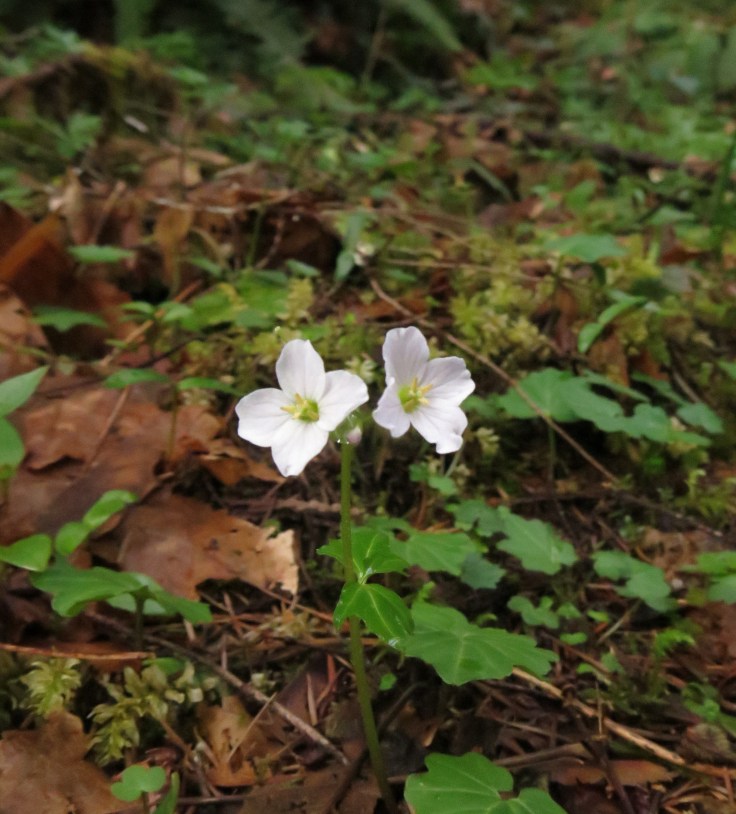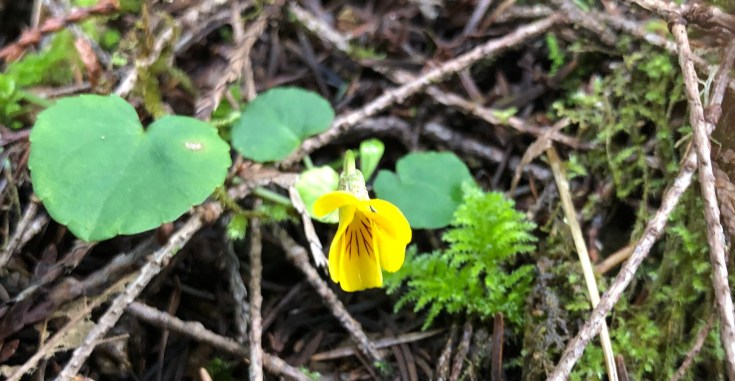
Everything’s coming up flowers, but it’s not coming up maple sap at our cabin this year. That is, it’s been warmer than usual, which is giving us flowering earlier than in previous years, but we’ve been getting less sap to make maple syrup. A lot less.
Here are some informal stats.
About the flowers . . . We tiptoe around, looking at all the flowering plants on our property. We’ve been recording the earliest date that each species blooms. (You can see most of the 335 species–natives and exotics, natural and planted– on my Instagram @botanybarb where I’ve posted photos on earliest flowering dates.)
This year, I have an injured foot, so we certainly aren’t traipsing around the hills more than usual. Even so, we’ve found that 14 species have already flowered. Of those, 11 bloomed earlier this year than any other year in our ten-year record.
Granted, the records are messy–we aren’t there every day, and we don’t see every blossom the moment it appears–but even so, the tabulation has some value. The flowers really are blooming earlier this year.

And about the maple syrup . . . To get sap from bigleaf maple trees, we need freeze-thaw cycles in December, January, and February. The plants employ the sugar in the sap for a novel physiological reason, but we take advantage of it. In almost every other situation, the sugars move in the inner bark, not the wood.
But we’ve had very few freeze-thaw cycles this winter. In each of the past two years, by the beginning of February, we’d already collected 45-47 gallons of sap. This year, using the same number of taps and the same thoroughness, we’ve only collected 20% of that amount.
After the sap boils down to 1/60th of its original volume to become syrup, instead of the typical 24 cups of syrup, this year we have only 5 cups. There really is less sap this year.
And about these observations . . . If all I want to know is that it’s been warmer than usual this winter, I could have found that online.
I queried a database on the NOAA site, called the ASOS Temperature Departures and Degree Day Maps Database, about temperatures in December and January this year relative to normal. In those two months, 23% of the days at our cabin were cooler than normal, whereas 77% of the days were warmer than normal–and often, substantially warmer.
It really has been warmer than normal. And those data were pretty easy to find.

But I suppose I didn’t just want to know about the temperature . . . I wanted a pretext for saying, “Hey, there are flowers!” I wanted to shout, “It’s amazing! I saw wood bittercress yesterday and an evergreen violet! Even some white weeds!”
The understory right now is usually dark and dank and wet, with the beginnings of emerging leaves. The main color surprise was meant to be an old red leaf. But there are dabs of pale pink, flashes of yellow, ruffles of blue-violet, as dark as the leaves they emerge from. Tight bright beebees of white, too! Lovely!

The sights made me stop and look again. I wanted everyone to know!
And I wanted to tell them about sap.“Goes to show, you can’t count on getting a good sap harvest every year. Mustn’t expect to!” Nature doesn’t work that way. We’ll enjoy the syrup when we have it, and be grateful when it’s there–and then just not have it for a while. When we have it again, we’ll be thankful all over again.
And I’m limping up and down the muddy trails because of a desperate need to catalog the flowers. I’m lugging jugs of sap a quarter mile, then boiling them down, with my phone set to check the pot every quarter-hour for the next half-day, just to avoid buying bigleaf maple syrup at $2 an ounce. My habits–my esoteric ticks–they’re my pretext to stomp around outside. I tell myself, “Gotta go.” I put down what I’m doing, pull on the boots, call the dogs, and get out there.

What will I hear? A rumble of a stream, the wind making a tree-trunk moan. What will I see besides? Leaves that most of the year look like big clovers, still skinny like wires, or leaflets that are supposed to be graceful still stacked in little packets tight on the stem. What will I collect? Photos of a mushroom whose red cap is smaller than a punch-hole. A feather. A skeletonized leaf.
Everything that is out there that moment, I’ve had a chance to see. What a privilege. Next time I go out, it will have changed. It changes, it changes.
I make my observations. And I change, too.
Thanks for your recent post…just reading it makes me breathe more deeply!
We’ve had such a wimpy winter in NE: no reliable snow cover to speak of except much farther north & at higher elevations. February usually has us digging out from a blizzard or two.
Unrelated but cool, we now have grey and black squirrels in our neighborhood. The black ones have been making their way north from southern NE.
Love getting your posts! -Flora
LikeLike
Thanks, Flora. That’s interesting to see the squirrels moving! Do you have turkeys? They’ve really swept Oregon and Washington in the last few years. I know they’re native in the east (not sure where), but not here. Nice to hear from you, and thanks for your comment.
LikeLike